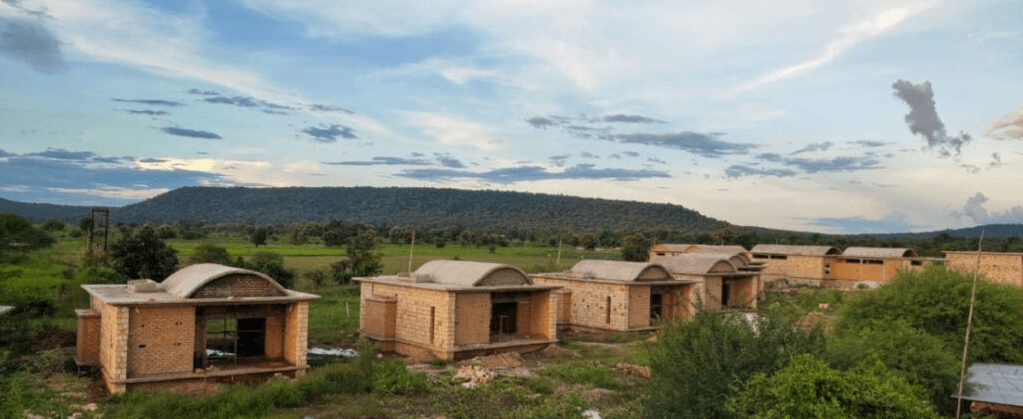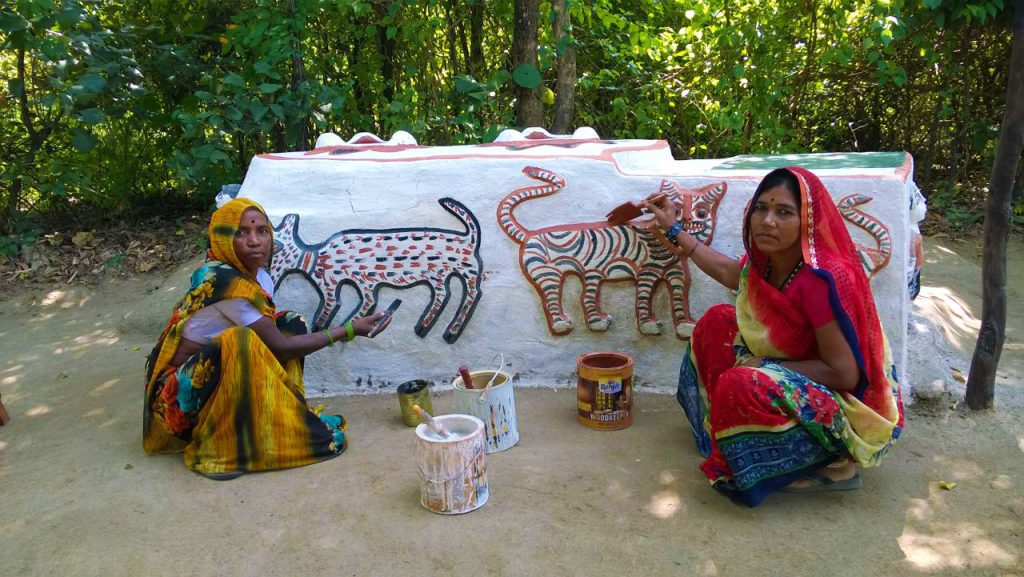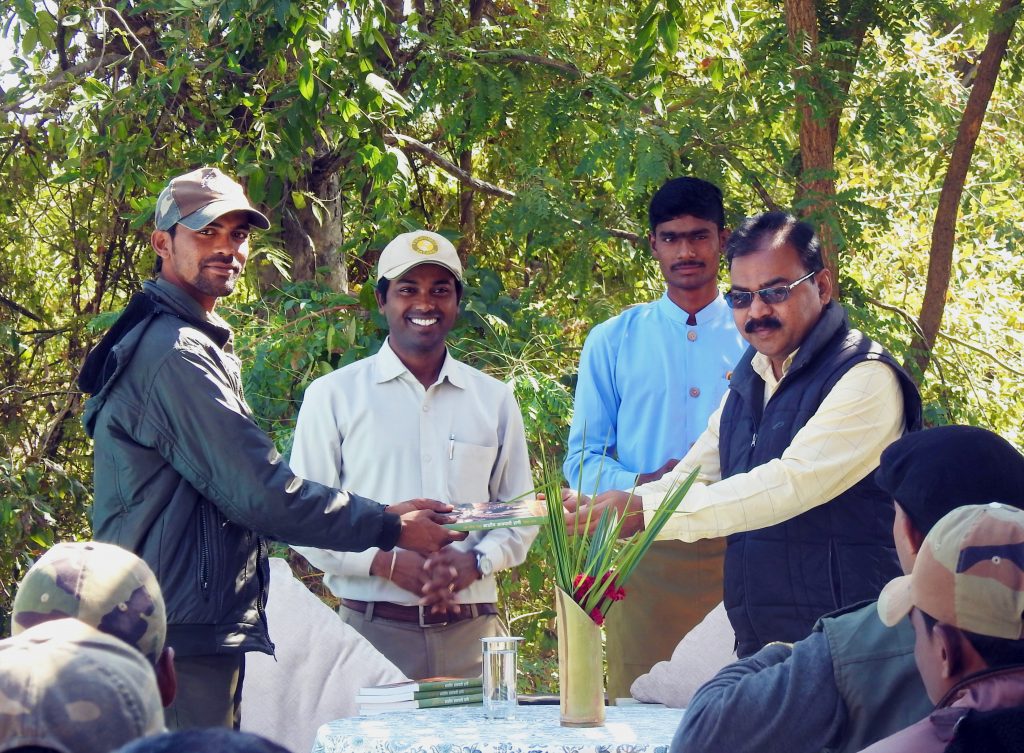Tadoba, or the land of Taru is a flourishing tiger country where culture and nature are inevitably entwined. This bio-diverse ecosystem was the ancient dynasty of Gonds. It is a known fact that Tadoba was named after a Gond King, Taru who fought a valiant battle with a tiger.
We are looking forward to bringing to you our luxurious Waghobha Eco-Lodge set in the heart of the unbridled wilderness of Tadoba, Maharashtra. This is our 7th lodge, built painstakingly with minute attention to detail, keeping all sustainable construction and practices in place. The inspiration behind the name Waghoba is Wagh as the tiger is called in Maharashtra.

The History and Etymology of Waghoba
Waghoba is an ancient tiger or leopard deity worshipped for centuries by various tribes in India. “Waghoba” is a combination of two Marathi words: “wagh” and “ba”. “Wagh” stands for tiger and “ba” is suffixed as a word of respect. Waghoba is either worshipped as a leopard or a tiger, or one which can take both forms.
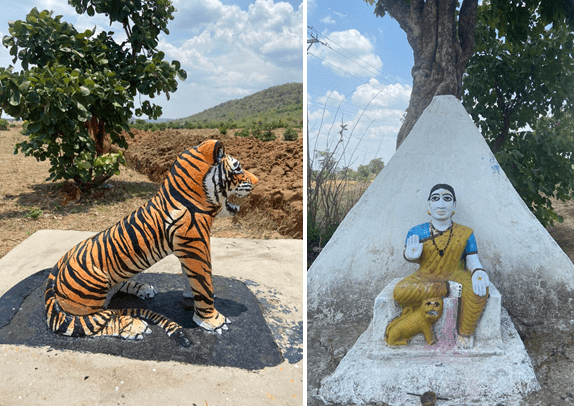
The Waghoba idol is that of a large cat. Carved in stone or wood, this painted idol is occasionally smeared with vermilion. Frequently seen in small temples dedicated to the Waghoba, and also in larger temples, next to the chief deity’s idol, Waghoba is revered as the ‘vahana’ (vehicle) of the chief deity. There are multiple shrines dedicated to the cat deity across Maharashtra, Goa, Central India (Bageshur), even in Northern belt of India. One such instance is Bageshwar, in Uttarakhand which gets its name from the wagh.
Many of the Waghoba idols are hundreds of years old, and regularly worshiped. The local communities have firm faith in the fact that Waghoba protects them and the forests. In an age of human-animal conflict it is heartening to see that for centuries the large cat has been worshipped and people co-existed with them.
Pugdundee’s Waghoba-Eco Lodge in Tadoba
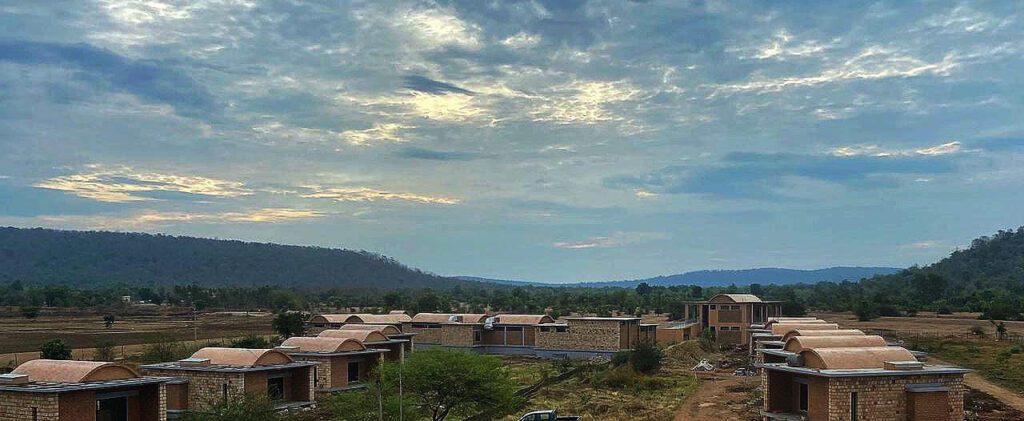
At Pugdundee Safaris, it’s been our constant endeavour to work sustainably, hand in hand with the forest ecosystem where we build our lodges in. Our six lodges at Kanha, Pench, Panna, Satpura and Bandhavgarh are an ideal case study in co-existing with wildlife and nature, taking into account inclusiveness of the local communities residing around the area.
Waghoba-Eco lodge is all geared to set new standards in eco-friendly construction in India. It has 14 exclusive luxury cottages, constructed meticulously with hand made Guna Adobe bricks and local stone. It offers a swimming pool, organic vegetable and herb garden, nature library and a lounge, and a man-made hide for bird watching. The lodge is about 15 minutes’ drive from Khutwanda gate of Tadoba, and about 30 minutes from Moharli gate.
Our Sustainability Story – Construction of Waghoba-Eco Lodge
Root Stock Protection
The patch of land we used for our construction was barren. Right from the beginning, we have started protecting the root stock and supplemented the landscape with local species. For instance, Babool regenerated from root stock is doing extremely well. Kachnar and Bamboo were planted and are showing good progress of growth. Over 50 other local species, including herbs have been planted. We hope that in years to come our landscape will turn into yet another lush, abundant forest cover, within the thriving Tadoba National Park
We are aware that the growth of flora is slow in Tadoba naturally, and trees tend to be stunted. But our root stock protection and plantation drive will reap benefits in the years to come.
Sustainable Construction
“Since Tadoba is amongst the hottest places in world, we decided to meet this challenge by using uniquely different, sustainable construction styles, bringing to you the best of luxury, balanced with our environmentally safe practises. Power is amongst the top expenses for the hotel industry, that generates maximum carbon footprint. By using sustainable construction styles we have managed to reduce the ambient temperature by 6-7 degrees. This has led to significant reduction in our energy consumption, reduced our carbon footprint, while ensuring our guests a seamless and finer experience.”
– Manav Khanduja, Director, Pugdundee Safaris
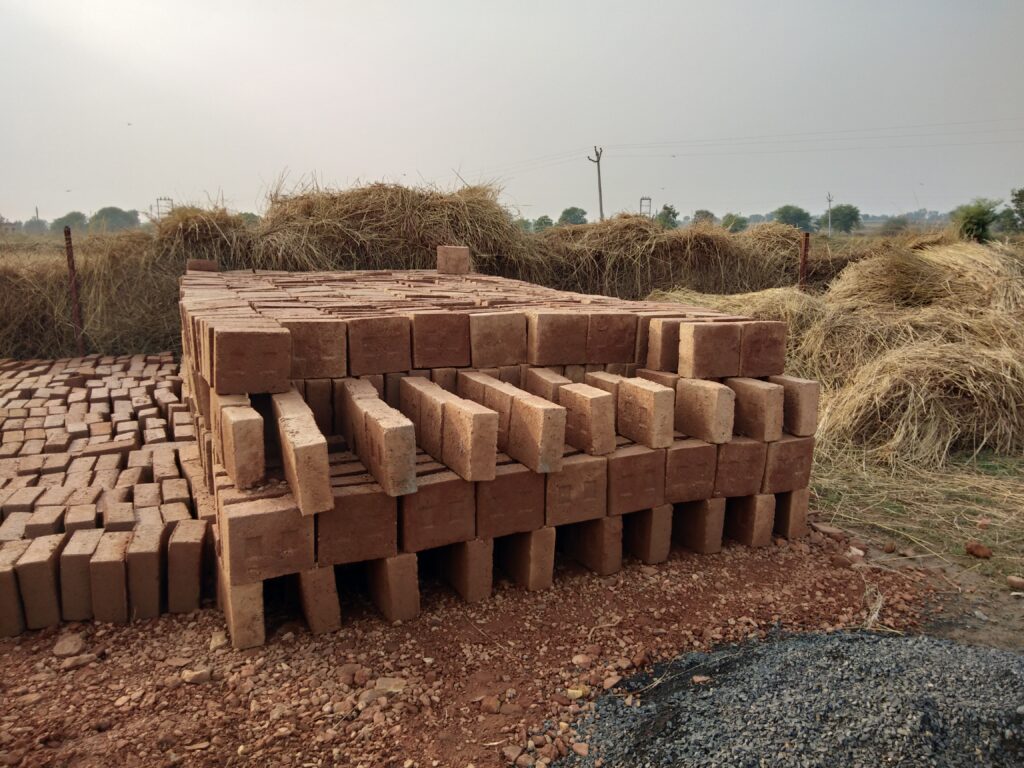
We have used Adobe bricks made using soil dug up for the foundation and prepared on site. Our Guna vault roofs tiles are made by local potters of a nearby village, thus supporting the local community. This endeavour for the Guna vault roof has been assisted by a local NGO – Centre of Science for Villages (CSV). This roof is self supported and uses significantly less concrete and steel compared to modern concrete roofs seen everywhere. The gap in the earthen glasses helps with insulation, and keeps the buildings cooler, thereby reducing the cooling load and consumption of electricity and air-conditioning.
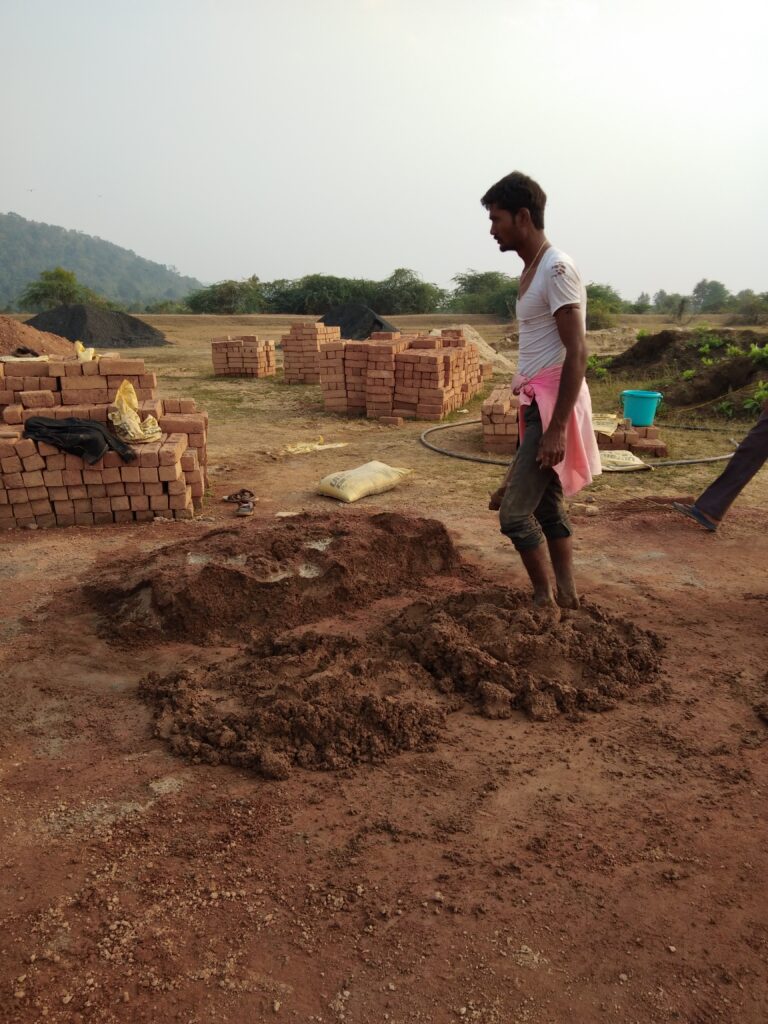
The stone used in construction is also locally sourced from just about 20 kms from the lodge.
All these endeavours have ensured that we majorly reduce our carbon foot print and in turn help the local communities with a source of livelihood.
The direction of construction, including the windows, doors, porches etc. are planned in such a way that they reduce impact of the suns direct heat to the rooms. The eastern and western facade has half stone and half Adobe insulates. Broken ceramics are also used on the roof to reflect the sun’s harsh rays and reduce heat.
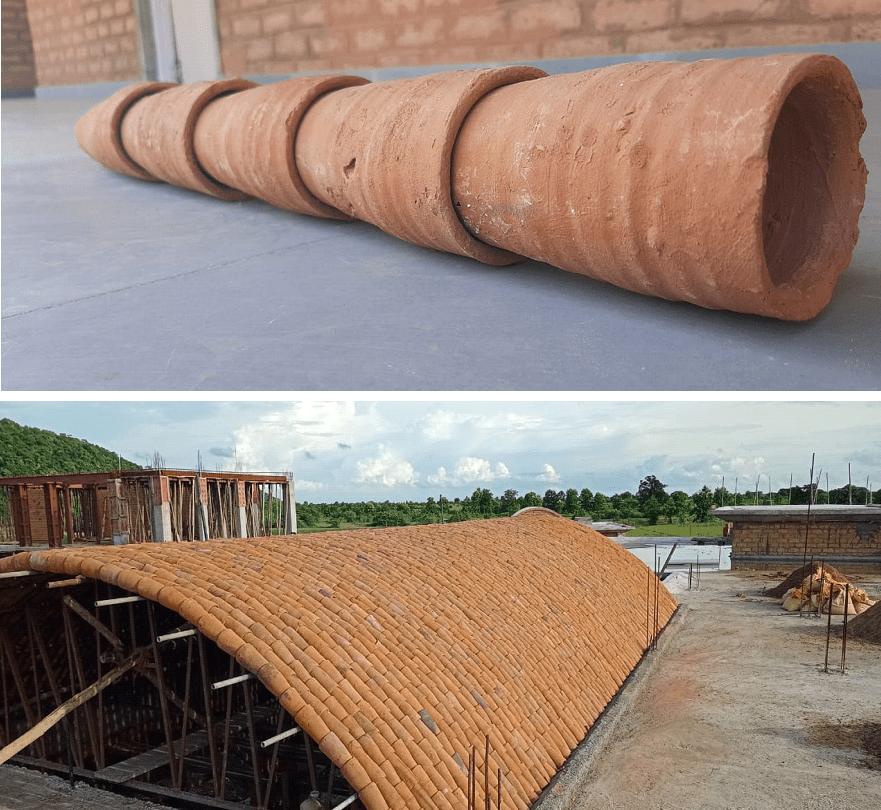
Overhangs have been designed so as to minimise day heat and keep the building cool. The dining, office, lounge etc. is all cooled using coolers, rather than AC. This helps reduce electricity for these sections by 75% and also our balances our carbon footprint.
LED, sustainable lighting fixtures, waterless urinals, using 100% cotton, state of art stainless steel kitchen are few more sustainable practises that we are adopting.
Waghoba Eco Lodge, by Pugdundee Safaris is all geared to set new standards in eco-friendly construction.
From Our Architect’s Desk
Pugdundee Waghoba Eco Lodge’s sustainable construction has been handled seamlessly by Biome Solutions; despite a long standing pandemic.
Here is what Anurag Tamhankar, Director, Biome Solutions has to say, about our joint sustainable construction story in the wilderness.
“It’s been a pleasure to be part of Pugdundee’s Waghoba Eco lodge where the land is located adjacent to the forest buffer. This lodge is designed and built following ecological principles.
More than half of the land is conserved and afforested to get the native flora and fauna right in the property. A large wetland is developed as biodiversity hotspot for avian fauna at the entrance of the property. The buildings are designed using passive strategies to reduce their energy demand.
The construction was conceptualised to merge with the brown landscape of Tadoba. Given the flat terrain and dwarf forest of this region the scale of buildings was brought down by using vaulted roofs. Adobe blocks made of local soil and stone masonry has been used as camouflage in the grassland.”
Local materials used in construction offer the guests a unique experience, while staying conscious about the environment. Handmade blocks made of soil from close vicinity used for making walls, vaulted ceilings made from handmade conical tiles; are some of the distinct characters of the property.
Rainwater harvesting and recharging is done to reduce the dependency on ground water sources, and to improve the ground water respectively. All waste water generated is treated using plant based water treatment system and is used for kitchen garden and the afforestation process.”
Water Harvesting and Water Bodies
Rain water tank has been prepared for water harvesting at Waghoba Eco lodge, along with a water treatment plant to recycle and reuse water used in the cottages and otherwise. The treated water will be used for the kitchen garden and landscaping the lodge.
STP (Sewage Treatment Plant) also made by local Nagpur based NGO called NEERI, operates on Phytroid technology. The Phytorid technology has been developed by CSIR-National Environmental Engineering Research Institute (NEERI), Nagpur. The STP treats the effluents present in sewage water, leading to an environment friendly and cost effective treatment of the recycled water.
We have extended an existing shallow lake to help increase ground water levels. On the side of the lake we have built a hide for birdwatching and photography enthusiasts. This will be fed by rain and also excess water from our STP.
Water Hide for Bird Watching
A man-made water body at a lower height has been built which will offer excellent bird watching opportunities. The water body has a bund or embankment, which will help retain moisture in the summers when the water body dries. Whereas, when the moisture increases with changing seasons, it will assist in growth of the flora. A few nesting grounds have also been found around the area.
The purpose of these sustainable initiatives is to take less from the environment, instead give back in our own ways and in the process reduce our carbon foot print.
We are all set to open Waghoba Eco-Lodge in October 2021. We look forward to welcoming you into the lap of flourishing nature and the very best of eco-luxury.
Written by: Natasha Sinha
| As you plan a trip to flourishing tiger country, get in touch with our trip curators at Pugdundee Safaris. Call us at: +91-9718637711, +91-8800637711 Email: [email protected] We promise you a wilderness experience you will treasure for times to come. |
Kanha Earth Lodge – Kanha | Pench Tree Lodge – Pench
Kings Lodge and Tree House Hideaway – Bandhavgarh
Ken River Lodge – Panna | Denwa Backwater Escape – Satpura

